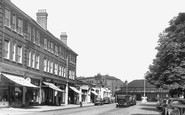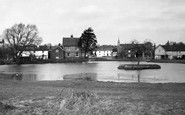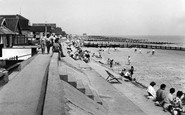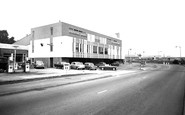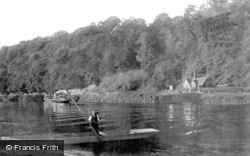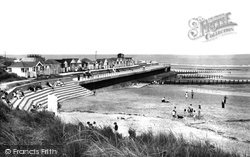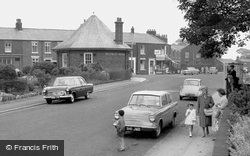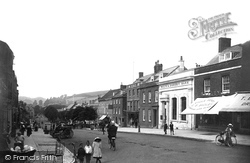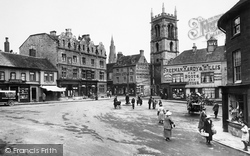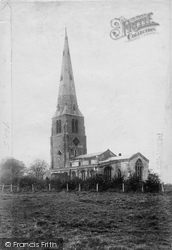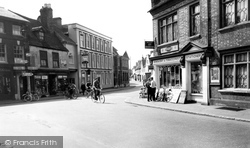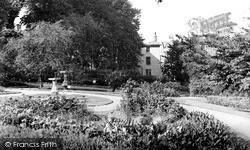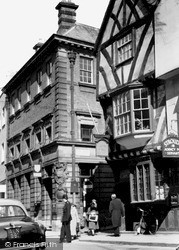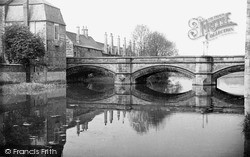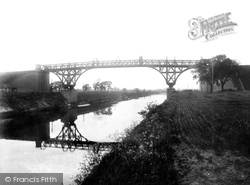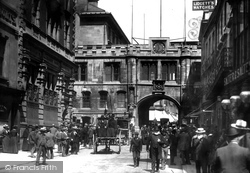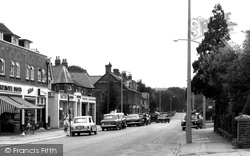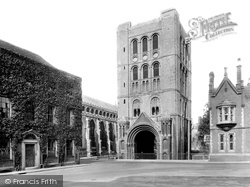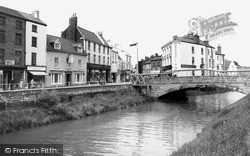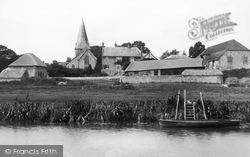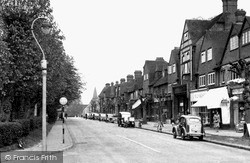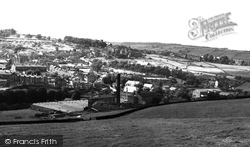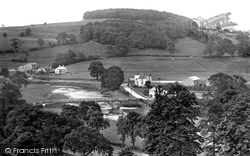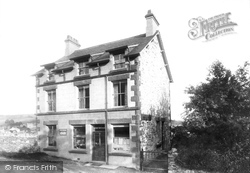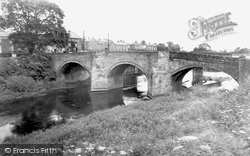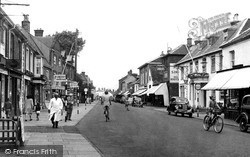Places
3 places found.
Those places high-lighted have photos. All locations may have maps, books and memories.
Photos
63 photos found. Showing results 1,001 to 63.
Maps
12 maps found.
Books
1 books found. Showing results 1,201 to 1.
Memories
7,564 memories found. Showing results 501 to 510.
Toast Rack. Motorcycles.
Where the pushbike is, The Toast Rack cafe was, a favourite place for us 'rockers' to meet for coffee and a smoke (back in the days when we all did). This was the meeting place on a Sunday morning to ride to Box Hill and ...Read more
A memory of Sutton in 1961 by
1939 1949
RE: Holmeleigh Horncastle Childrens Homes and School Years I was in the "Homleigh" from 1939 to 1949. For anyone there at that time I was always known as 'Bunny'. Someone mentioned about two boys getting to London; well, I was one ...Read more
A memory of Horncastle in 1940 by
Boarding & Quarantine Kennel
I worked at a large boarding & quarantine kennel for a year or two back in the late 60's or early 70's, in the Croydon area and I wondered if anyone remembers the name or even location - or anyone that might have ...Read more
A memory of Croydon in 1967 by
The Goat Forty Hill.
I used to play piano in The Goat on Saturday nights, I was only 15, but don't tell anyone! Wally Reid was the Governor, and his son Norman used to play drums too! We lived in Russell Road, number 69, and opposite our house ...Read more
A memory of Forty Hill in 1951 by
The Tin School And Thurlow Family
I was a pupil at the Tin School in Gilesgate Moor staring in 1954, leaving in 1961. It was at the crossroads of the road that now leads to Tesco, but opposite was the Durham District Services garage where my dad ...Read more
A memory of Durham in 1954 by
Burgh Heath
l remember when at the school l was not well, so was taken to Miss Marshall's house and was looked after by her elderly mother (I thought she was so old but probably wasn't). She told me about when they had the tea rooms and there ...Read more
A memory of Burgh Heath in 1958
Completely Changed!!
My father took my mother and I on holiday to Woolacombe every year in the 1950's. At that time, in the height of the Summer months we would be the only family on the main beach (as well as the Barracane Beach where we ...Read more
A memory of Woolacombe in 1950 by
Memories
We (me and older brother and sister), stayed in a relatives bungalow really close to the sea several years.. disjointed but strong memories :- - pebble dashed walls - those garden walls made of preformed concrete blocks with patterned ...Read more
A memory of Jaywick
Working At The Bowling Alley
Having returned from Australia, I got a job as controller 4 nights and Sundays, it was a great scene, what with the disco downstairs, the bar upstairs, a barber shop, restaurant, 24 lanes, and a juke box with great ...Read more
A memory of Cippenham in 1966 by
Young Days In Bexley
Other peoples memories are bringing back some of my own. Walking from Bexley to the Regal for Saturday morning movies across the heath. Frog spawn from the river at the mill. Walking to school past the brewery to the ...Read more
A memory of Bexleyheath in 1945 by
Captions
2,471 captions found. Showing results 1,201 to 1,224.
Past Cliveden is one of the most beautiful stretches of the Thames with its tree-clad river cliffs.
To the north beyond Ingoldmells, and rather more genteel, is Chapel St Leonards, where my mother used to holiday in the 1930s.
On the triangular village green, far left, is the war memorial and another recording the tragedy in August 1944 when an American bomber aeroplane fell on Holy Trinity village school.
This view depicts the bustle in West Steet, with children and cycles, and a flock of sheep being driven uphill (left of centre). Market stalls for animals can be seen between the trees.
North from St Mary's Street, St John's Street leads past St John's Church into Red Lion Square, the market place.
The parish church of St James stands inside a banked enclosure that was once the Bishop of Lincoln's manor. From here his estate of four nearby parishes was managed for more than five hundred years.
This view looks south down Dunstable Street from Market Place; the Moot Hall is on the right with its slender iron-glazed casements.
Tree-lined, and with lush green river banks, the River Ribble runs through pretty villages and on to Clitheroe, joining with the River Calder and the River Hodder.
Here we are looking along the stretch of the river where the famous Henley Regatta takes place. Viewing platforms can still be seen on each bank.
The gardens behind Bank House, situated in the lower High Street, were given to the town of Stroud in 1930 by Mr Ernest Winterbotham, and were intended as a quiet corner where shop workers could enjoy
This house stands on the corner of Coney Street and New Street. The lower part of the house is now a shop that sells mobile telephones, but the upper storey remains virtually unchanged.
This view was taken looking west, in the opposite direction to 72314. The chimneystacks of Lord Burley`s Hospital are an eye-catching feature along the south bank of the Welland.
At this time Warburton was a small village on the south bank of the Mersey, five miles west of Altrincham and twelve miles from Manchester.
Lincoln's celebrated Stone Bow is the later 15th-century medieval gate into the walled town, above which is the basically Tudor city Guildhall.
The Mini first took to the road in 1959, so it was a novelty when this picture was taken (centre left).
The building on the right was designed by Lewis Cottingham in 1846 as the Penny Bank, which functioned until 1892.
Spalding's townscape is 'made' by the River Welland, which bisects the town. There are roads along each bank and houses face the river, giving it a slightly Dutch feel.
We are on the navigable and tidal River Arun.The church of St John the Evangelist has a shingled broach spire; flint and stone are used for walling and buildings.A ferry with landing steps connected
At the far end a bank in Wren/Queen Anne style completes the row. Across the road beyond is a good Art Nouveau/Gothic church of 1912.
This view of the village on the hill from Hebden Road is dominated by the two big mills, the Ivy Bank Mills on the left and Bridgehouse Mill in the foreground.
Photographed from the Yorkshire bank of the Ribble, the view looks across Sawley to Noddle Hill.
The plate by the window to the left of the door (now a window) shows that this was also the telegraph office and money order office, and also the Post Office Savings Bank.
Felton stands on the north bank of the Coquet, and it was here that the Great North Road once crossed the river by way of the old bridge featured in the picture.
The seven-bay Crown Hotel (right), with columned porch, has a large and elaborate sign over the street. The painted advertisement next door has gone, but the gable beyond retains the date 1662.
Places (3)
Photos (63)
Memories (7564)
Books (1)
Maps (12)

